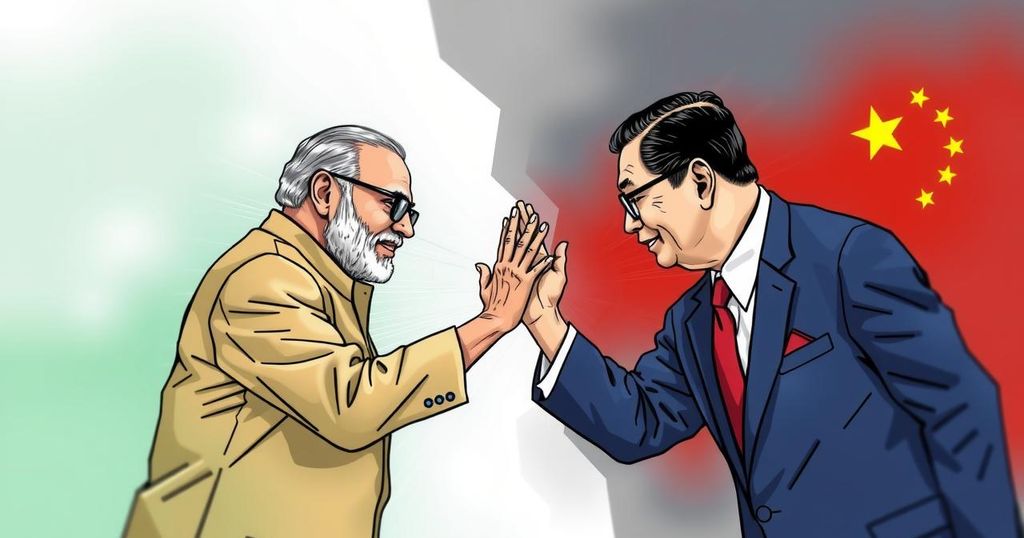India and China Forge Agreement to Alleviate Border Tensions

India and China have come to an agreement to reduce tensions along their disputed Himalayan border, focusing on patrolling arrangements and a resolution to issues stemming from 2020’s Galwan Valley clashes. India’s Foreign Secretary Vikram Misri announced this development ahead of Prime Minister Narendra Modi’s trip to Russia, while details about the disengagement process remain unspecified.
India and China have reached an agreement to alleviate tensions along their disputed Himalayan border, as announced by Vikram Misri, India’s foreign secretary, on Monday. This arrangement addresses the contentious issues that arose following the unprecedented clashes in the Galwan Valley in 2020, which resulted in injuries and casualties on both sides. Misri emphasized that the agreement includes arrangements for patrolling along the Line of Actual Control (LAC), aiming for disengagement and resolving problems that arose in those border areas. Despite this significant development, Mr. Misri refrained from specifying the particulars of the disengagement process or whether it would encompass all conflict points along the disputed border. His statement coincides with Indian Prime Minister Narendra Modi’s imminent visit to Russia for a BRICS summit that includes member nations such as Brazil, Russia, China, India, and South Africa. The potential for a bilateral meeting between Mr. Modi and Chinese President Xi Jinping was also not confirmed. The recent agreement marks a considerable shift in the relations between these two nuclear-armed nations, which have been strained since the aggressive confrontations in Galwan. Such confrontations were characterized by military skirmishes involving non-lethal weapons, in adherence to a 1996 treaty prohibiting firearms and explosives near the border. India and China have not achieved significant progress after multiple rounds of diplomatic and military discussions over the past four years, despite more clashes occurring in areas such as northern Sikkim in 2021 and Tawang in 2022. Long-standing border tensions have historically complicated India-China relations, rooted in a disputed boundary exceeding 3,440 kilometers (2,100 miles). This ambiguous delineation is further complicated by geographical features that can shift the border and cause direct encounters between troops, leading to confrontations.
India and China have engaged in an extensive history of border disputes, especially along their Himalayan frontier, which became pronounced during the Sino-Indian War of 1962, in which India faced a significant military defeat. The two nations share a volatile relationship characterized by territorial disagreements influenced by a poorly defined border, leading to various diplomatic tensions and confrontations. Following the Galwan Valley clashes, which were the first lethal conflict in decades, both nations have been under pressure to mitigate these tensions. The ongoing dialogue and recent agreements indicate a pursuit for a resolution to these long-standing conflicts. Furthermore, the struggle for infrastructure development along the border has exacerbated tensions, indicating an ongoing struggle for influence in this crucial region.
In conclusion, the agreement between India and China to de-escalate tensions marks a noteworthy advancement in their historically strained relationship. While details regarding the disengagement process remain vague, the acknowledgment of the necessity for improved relations following past confrontations provides hope for future diplomacy. Ongoing issues rooted in a complex border arrangement reveal the challenges still faced by both nations, but the recent developments signal a commitment to resolution and peace efforts in the region.
Original Source: www.bbc.com








